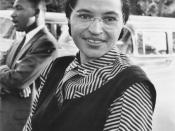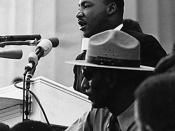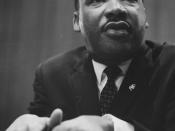CIVIL RIGHTS REPORTER
June 2, 2003
Little Rock Nine
Today, in Little Rock Arkansas, the school district superintendent of the Little Rock school board allowed the desegregation of a school here. Central High School added nine African American students to its population of about two thousand White students. The night before the first day of school, Arkansas' governor, Oral Faubus announced on television that the National Guard was posted at the school to prevent "evidence of disorder and threats of disorder". The governor met with President Eisenhower to discuss a one-year delay in the implementation of desegregation, but was denied. The governor then withdrew all guards from the school, resulting in chaos and the quick departure of the "Little Rock Nine". President Eisenhower was forced to send in federal troops into the city to protect the colored students. The paratroopers will be withdrawn in approximately one month, but it seems the guards will have to stay for the rest of the school year.
Selma
In Selma, Alabama, Martin Luther King Jr. and civil rights leaders in the city announced a huge protest march. The march was to start from Selma, and end in the state capital in Montgomery, a total of 54 miles. The protest was in retaliation for two months of beatings, arrests, and a murder. Governor George Wallace banned the march, but Hosea Williams, King's chief aide, and John Lewis, a SNCC leader decided to march anyway. When the demonstrators reached the Edmund Pettus Bride on the way to Montgomery, Sheriff Jim Clark's deputies lined up on both sides of the bridge while almost 100 state troopers blocked the other end. After two minutes of tension and a steady warning, the deputies unleashed with tear gas and clubs, driving the protesters back to Selma. Two days later, Martin...


